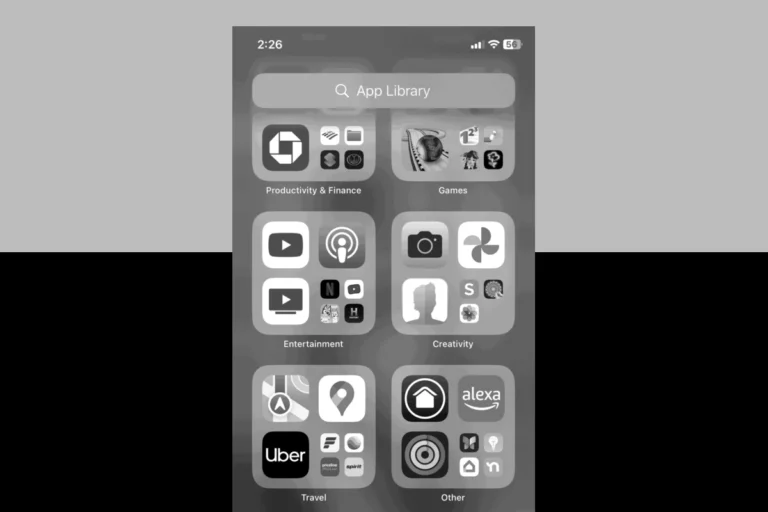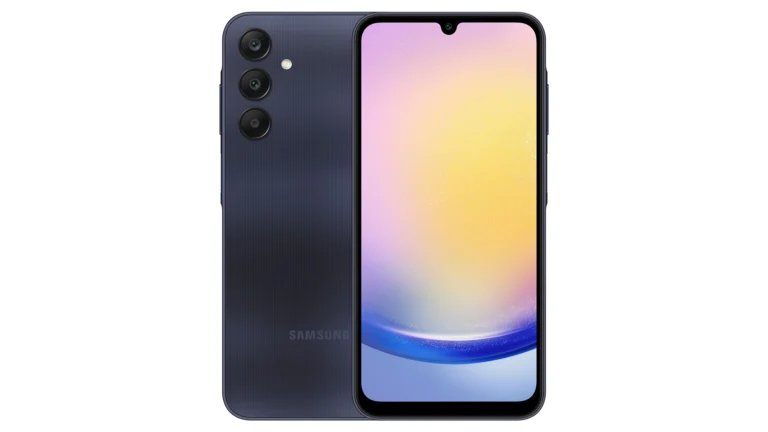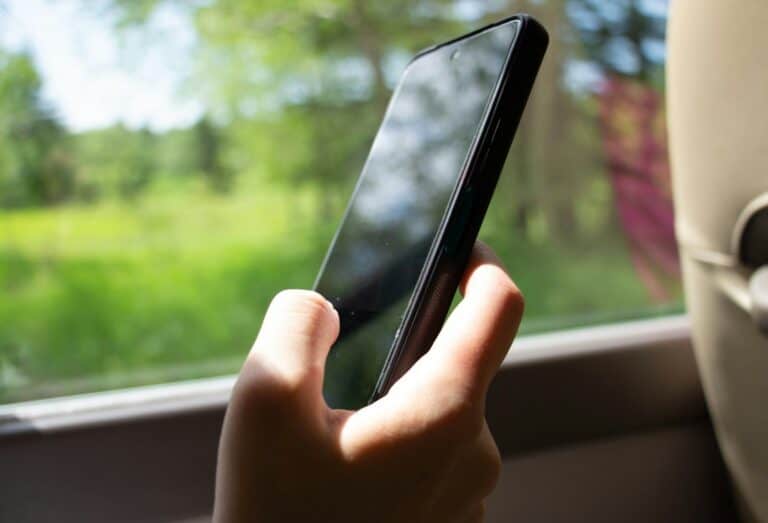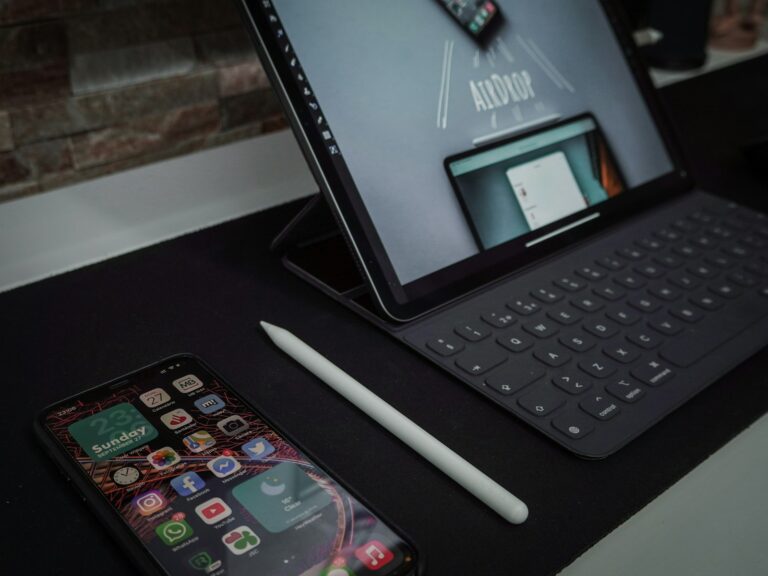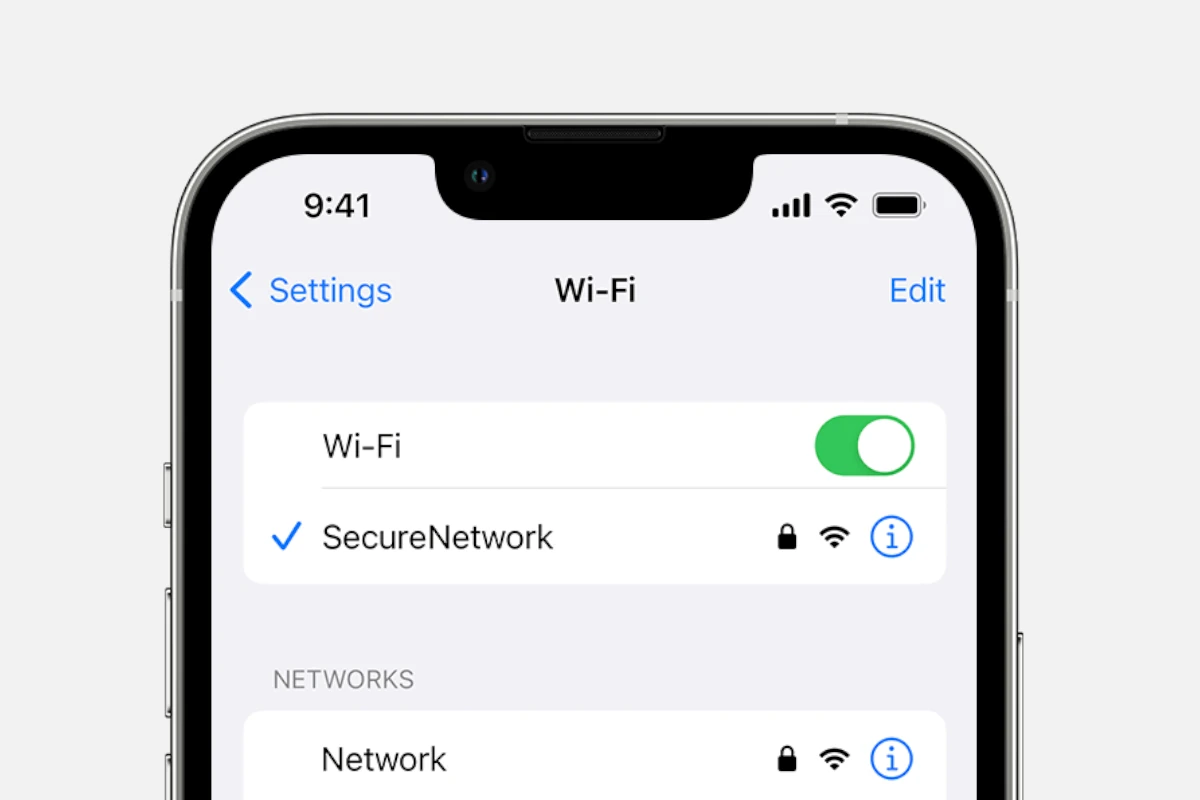
Wi-Fi connectivity issues can be frustrating for iPhone users. Resetting network settings often resolves Wi-Fi disconnection problems on iPhones. This quick fix erases stored Wi-Fi passwords but doesn’t delete any other data or apps.
Other simple solutions exist. Restarting the iPhone or router can help. Checking for iOS updates ensures the device has the latest connectivity improvements. Turning off Wi-Fi Assist may prevent automatic switches to cellular data.
Advanced troubleshooting steps are available for persistent issues. These include forgetting and reconnecting to networks, updating router firmware, and adjusting Wi-Fi settings. Contacting Apple Support or the internet service provider may be necessary for complex problems.
Why Your iPhone Keeps Disconnecting from WiFi
WiFi disconnection issues typically stem from problems with either your iPhone or your router. Common causes include:
- Network settings corruption – Stored network data becomes corrupted
- iOS software bugs – Outdated or buggy iOS versions
- Router interference – Signal interference from other devices
- WiFi network congestion – Too many devices on the same network
- Hardware issues – Problems with your iPhone’s WiFi antenna
- Conflicting network configurations – Incompatible router settings
As noted by troubleshooting experts, the issue usually boils down to problems with either the phone or the router (source: GeekSchalk).
Quick Fixes to Try First
1. Restart Your iPhone
The classic “turn it off and on again” often resolves temporary software glitches:
- Press and hold the power button and volume button
- Slide to power off
- Wait 30 seconds, then turn back on
2. Restart Your WiFi Router
Network equipment can benefit from a fresh start:
- Unplug your router for 30 seconds
- Plug it back in and wait for full startup
- Test your iPhone’s connection
3. Toggle WiFi Off and On
Sometimes a simple WiFi reset helps:
- Go to Settings → WiFi
- Turn WiFi off, wait 10 seconds
- Turn WiFi back on and reconnect
Comprehensive Troubleshooting Steps
Step 1: Update Your iPhone
Outdated iOS versions often contain WiFi-related bugs that Apple has since fixed.
- Go to Settings → General → Software Update
- Download and install any available updates
- Restart your iPhone after updating
- Test WiFi connectivity
Apple support recommends keeping your device updated as a primary troubleshooting step (source: Apple Community).
Step 2: Forget and Reconnect to WiFi Network
This clears any corrupted network data:
- Go to Settings → WiFi
- Find your network and tap the (i) icon
- Tap Forget This Network
- Confirm by tapping Forget
- Reconnect by selecting the network and entering the password
Step 3: Reset Network Settings
This comprehensive fix clears all network-related settings and often resolves persistent issues:
Important: This will erase all saved WiFi passwords, Bluetooth connections, and VPN settings.
- Go to Settings → General → Transfer or Reset iPhone
- Tap Reset → Reset Network Settings
- Enter your passcode
- Confirm the reset
- Your iPhone will restart automatically
- Reconnect to your WiFi networks
Network settings control how your iPhone connects to WiFi and cellular networks, and resetting them provides a fresh start without affecting your apps or data (source: AppGeeker).
Step 4: Check Router Settings
Sometimes the issue lies with your router configuration:
Router Troubleshooting:
- Check for interference – Move closer to the router to test
- Switch WiFi channels – Use your router’s admin panel to change channels
- Update router firmware – Check manufacturer’s website for updates
- Reduce connected devices – Temporarily disconnect other devices to test
- Check bandwidth limits – Ensure your router isn’t throttling connections
Step 5: Disable WiFi Assist
WiFi Assist can cause connection issues by switching between WiFi and cellular:
- Go to Settings → Cellular (or Mobile Data)
- Scroll to the bottom
- Toggle off WiFi Assist
Step 6: Check Low Power Mode
Low Power Mode can affect WiFi performance:
- Go to Settings → Battery
- Turn off Low Power Mode if enabled
- Test WiFi connectivity
Advanced Troubleshooting
Check for iOS System Issues
If basic troubleshooting doesn’t work, you might be dealing with deeper iOS system problems. Consider:
- DFU Mode Restore – For severe software issues
- iTunes/Finder Restore – Complete iOS reinstallation
- Third-party repair tools – iOS system repair software
Hardware Diagnostics
If software fixes don’t work, the problem might be hardware-related:
- Apple Diagnostics – Run built-in hardware tests
- Apple Store Genius Bar – Professional hardware diagnosis
- Authorized repair centers – If your iPhone is out of warranty
Prevention Tips
Keep Your iPhone Optimized
- Regular iOS updates – Install updates promptly
- Restart weekly – Regular restarts prevent software buildup
- Monitor storage – Keep at least 1GB free space
- Close unnecessary apps – Reduce background network usage
Optimize Your Network Environment
- Router placement – Position centrally, away from interference
- Regular router restarts – Monthly router restarts help performance
- Network monitoring – Use WiFi analyzer apps to check signal strength
- Quality of Service (QoS) – Configure router QoS for better bandwidth management
When to Contact Apple Support
Contact Apple Support if:
- Problems persist after trying all troubleshooting steps
- Multiple devices have the same issue (likely router problem)
- Your iPhone is still under warranty
- You suspect hardware failure
You can reach Apple through their official support channels or visit an Apple Store for hands-on assistance.
Conclusion
WiFi disconnection issues on iPhone can be frustrating, but they’re usually fixable with the right approach. Start with simple solutions like restarting your devices, then progress to more comprehensive fixes like resetting network settings.
The key is systematic troubleshooting – work through each step methodically, and test your WiFi connection after each attempt. Most users find success with network settings reset, which clears corrupted data while preserving your important files and apps.
Remember, if the problem affects multiple devices, focus on your router and network infrastructure rather than iPhone-specific solutions. With patience and the right troubleshooting approach, you’ll have your iPhone staying connected to WiFi reliably once again.
Key Takeaways
- Resetting network settings often fixes iPhone Wi-Fi disconnection issues
- Simple solutions include restarting devices and updating iOS
- Advanced troubleshooting may involve router updates and Wi-Fi setting adjustments
Understanding Wi-Fi Connectivity on iPhone
iOS manages network connections and interacts with Wi-Fi hardware. Several factors can cause iPhones to disconnect from Wi-Fi networks, including software issues and signal problems.
The Role of iOS in Network Connectivity
iOS controls how iPhones connect to Wi-Fi networks. It manages network preferences, security protocols, and signal detection. The operating system scans for available networks and remembers previously connected ones.
iOS also handles automatic network switching and power management for Wi-Fi. It can turn off Wi-Fi to save battery when not in use. Apple regularly updates iOS to improve Wi-Fi performance and fix connectivity bugs.
Users can adjust Wi-Fi settings in the iOS Settings app. Options include turning Wi-Fi on or off, forgetting networks, and setting up new connections.
Common Causes for iPhone Disconnecting from Wi-Fi
Wi-Fi disconnections on iPhones can stem from various issues. Weak signal strength is a frequent culprit. Moving too far from the router or having obstacles between the iPhone and router can cause drops.
Router problems can also lead to disconnections. Outdated router firmware or incorrect settings may interfere with stable connections. Restarting the router often resolves temporary glitches.
Software bugs in iOS sometimes affect Wi-Fi stability. Updating to the latest iOS version can fix known connectivity issues. Network setting conflicts on the iPhone may cause disconnects too.
Interference from other devices or networks can disrupt Wi-Fi connections. Changing the router’s channel or switching to a less crowded frequency band may help.
Basic Troubleshooting Steps
Wi-Fi connectivity issues on iPhones can often be resolved with simple fixes. These steps help users address common problems and restore stable connections quickly.
How to Restart Your iPhone and Router
Restarting devices can clear temporary glitches. Turn off your iPhone by pressing and holding the side button, then slide to power off. Wait 30 seconds before turning it back on.
For the router, unplug it from the power source. Wait for 60 seconds, then plug it back in. Allow the router to fully restart, which may take a few minutes.
Once both devices are back on, check if the Wi-Fi connection is stable. This process refreshes network settings and can resolve many connectivity issues.
Resetting Network Settings on iPhone
If restarting doesn’t work, try resetting network settings. Go to Settings > General > Transfer or Reset iPhone > Reset > Reset Network Settings. Enter your passcode to confirm.
This action erases saved Wi-Fi networks and passwords, Bluetooth connections, and cellular settings. After the reset, reconnect to your Wi-Fi network by entering the password.
Resetting network settings can fix deeper software issues that cause Wi-Fi disconnections. It’s a more thorough solution than simply toggling Wi-Fi on and off.
Forgetting and Rejoining Wi-Fi Networks
Sometimes, network-specific issues occur. To address these, “forget” the problematic network and rejoin it. Go to Settings > Wi-Fi > tap the (i) next to your network > Forget This Network.
After forgetting the network, tap it again in the Wi-Fi list. Enter the password to rejoin. This process recreates the connection, potentially resolving authentication or IP address conflicts.
If issues persist, try connecting to a different Wi-Fi network to determine if the problem is network-specific or device-related.
Advanced Wi-Fi Settings and Solutions
Tweaking advanced settings and exploring hardware solutions can often resolve persistent Wi-Fi disconnection issues on iPhones. These approaches require more technical knowledge but can be highly effective.
Configuring DNS and VPN Settings
Custom DNS settings can improve connection stability. To change DNS:
- Go to Settings > Wi-Fi
- Tap the “i” icon next to your network
- Select “Configure DNS”
- Choose “Manual” and enter preferred DNS servers
Popular DNS options include Google (8.8.8.8, 8.8.4.4) and Cloudflare (1.1.1.1, 1.0.0.1).
VPN usage can sometimes interfere with Wi-Fi. Try disconnecting VPN to see if it resolves issues. If VPN is necessary, switch providers or adjust VPN settings for better compatibility.
Wi-Fi Assist, found in Settings > Cellular, can be toggled off to prevent automatic switching to cellular data.
Updating Router Firmware
Outdated router firmware can cause connectivity problems. To update:
- Access router admin panel (usually 192.168.0.1 or 192.168.1.1)
- Look for a “Firmware Update” option
- Check for and install available updates
If unsure, consult the router’s manual or manufacturer’s website for specific instructions. Regular firmware updates improve performance and security.
Possible Hardware Repairs and Replacements
Hardware issues may require professional intervention. Signs of hardware problems include:
- Wi-Fi works on other devices but not iPhone
- Issues persist across multiple networks
- Problems started after physical damage
Contact Apple Support or visit an Apple Store for diagnosis. They can check the Wi-Fi antenna and other components. If under warranty, repairs might be free. For older devices, replacing the iPhone might be more cost-effective than extensive repairs.
Maintaining Reliable Wi-Fi Connection
Consistent Wi-Fi connectivity is crucial for iPhone users. Proper network maintenance and knowing when to seek professional help can significantly improve connection stability.
Best Practices for Network Stability
Regularly update your iPhone’s iOS to ensure compatibility with the latest Wi-Fi protocols. Go to Settings > General > Software Update to check for and install any available updates.
Restart your Wi-Fi router periodically to clear its memory and refresh connections. Unplug the router, wait 30 seconds, then plug it back in.
Keep your iPhone away from potential sources of interference like microwave ovens, cordless phones, and Bluetooth devices. These can disrupt Wi-Fi signals.
Adjust your router’s channel settings to avoid congestion. Access your router’s admin panel and select a less crowded channel for improved performance.
Enable Auto-Join for known networks in iPhone Settings > Wi-Fi. This ensures your device connects to trusted networks automatically when in range.
When to Contact Your ISP or Apple Support
If Wi-Fi issues persist after trying basic troubleshooting steps, contact your Internet Service Provider (ISP). They can check for service outages or line problems affecting your connection.
Run a speed test using a reputable app or website. If speeds are consistently below your plan’s advertised rates, your ISP may need to investigate further.
For iPhone-specific Wi-Fi problems, reach out to Apple Support. They can diagnose hardware issues or provide advanced software troubleshooting steps.
Consider contacting Apple if your iPhone drops Wi-Fi connections more frequently after a recent iOS update. They may have additional insights or fixes for version-specific bugs.
Frequently Asked Questions
iPhone WiFi connectivity issues can be frustrating, but many common problems have straightforward solutions. Users often encounter specific scenarios that require targeted troubleshooting steps.
What steps can I take when my iPhone disconnects from WiFi after being locked?
If an iPhone drops WiFi connection after locking, users can try toggling WiFi off and on in Settings. Disabling WiFi auto-join for problematic networks may also help. Updating to the latest iOS version often resolves lock screen-related WiFi issues.
How can I resolve the issue of my iPhone frequently disconnecting from my WiFi network?
Frequent WiFi disconnections can often be fixed by forgetting the network and reconnecting. Users should ensure their router firmware is up to date. Resetting network settings on the iPhone can resolve persistent connectivity problems.
What reasons might cause an iPhone, especially newer models like the 13 Pro Max, to lose WiFi connection?
Newer iPhones may lose WiFi due to power management features. Users can try disabling WiFi auto-join or adjusting Low Power Mode settings. Interference from other devices or outdated router software can also cause disconnections on recent iPhone models.
Is there a known issue with iOS 17 that results in iPhones disconnecting from WiFi networks?
Some users have reported WiFi connectivity issues with iOS 17. Apple has addressed several bugs in subsequent updates. Installing the latest iOS version is recommended to resolve any known WiFi-related problems.
How can I troubleshoot my iPhone disconnecting from both WiFi and Bluetooth connections?
When both WiFi and Bluetooth connections are unstable, resetting all network settings can help. Users should also check for iOS updates and restart their iPhone. If issues persist, restoring the device may be necessary.
Are there any specific settings to adjust on an iPhone to prevent it from dropping WiFi connections?
Disabling WiFi Assist can prevent iPhones from switching to cellular data. Users can also set DNS to automatic and disable location services for WiFi networking. Turning off VPN services may improve WiFi stability for some users.

